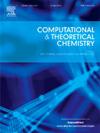The first-principle study of the interaction of the functionalized boron nitride nanotubes via Pd doping and Pd adsorption towards 2,3,7,8-tetrachlorodibenzo-p-dioxin
IF 3
3区 化学
Q3 CHEMISTRY, PHYSICAL
引用次数: 0
Abstract
In order to explore the applications of boron nitride nanotubes (BNNTs) in pollutant detection and removal, we perform two modified methods to functionalize BNNTs via Pd doping and Pd adsorption, and further investigate the adsorption interaction of these functionalized BNNTs towards highly toxic 2,3,7,8-tetrachlorodibenzo-p-dioxin (TCDD) by density functional theory (DFT) calculations. The results revealed that both Pd doping and Pd adsorption induce new impurity electronic states and improve the conductive performance of the BNNTs. However, the BNNT with Pd doping has notable distinctions in the DOS and spin DOSs compared to the BNNT with Pd adsorption, and particularly the former occurs spontaneous magnetization. These two functionalized BNNTs present the larger adsorption energy, clear electron density overlap and significant changes of DOSs towards TCDD with the respective electronic response signals compared with the pristine BNNT. These findings offer new possibilities to functionalize BNNTs via Pd doping or Pd adsorption to detect or remove dioxin.

求助全文
约1分钟内获得全文
求助全文
来源期刊

Computational and Theoretical Chemistry
CHEMISTRY, PHYSICAL-
CiteScore
4.20
自引率
10.70%
发文量
331
审稿时长
31 days
期刊介绍:
Computational and Theoretical Chemistry publishes high quality, original reports of significance in computational and theoretical chemistry including those that deal with problems of structure, properties, energetics, weak interactions, reaction mechanisms, catalysis, and reaction rates involving atoms, molecules, clusters, surfaces, and bulk matter.
 求助内容:
求助内容: 应助结果提醒方式:
应助结果提醒方式:


